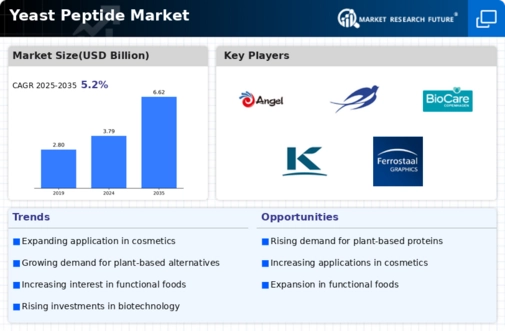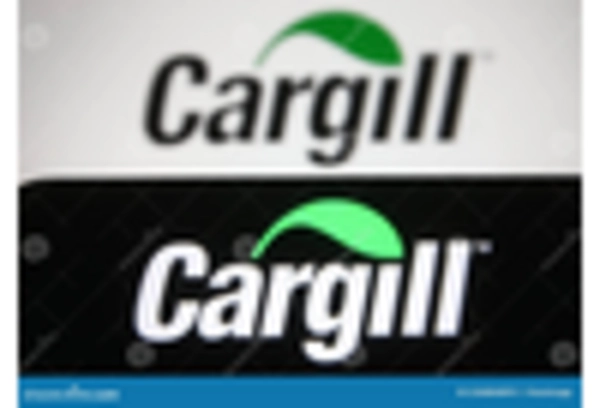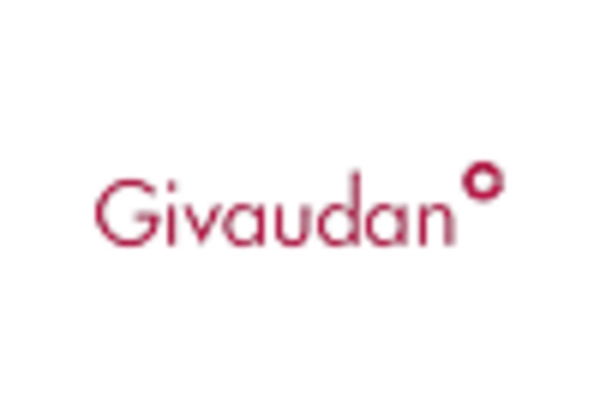Growth in Nutraceuticals
The burgeoning nutraceuticals sector is likely to serve as a significant catalyst for the Yeast Peptide Market. With an increasing number of consumers turning to dietary supplements for health enhancement, yeast peptides are being recognized for their potential to support immune function and overall well-being. Recent market analyses suggest that the nutraceuticals market is expected to reach USD 500 billion by 2027, with yeast peptides playing a crucial role in this expansion. This growth is indicative of a broader trend where consumers are prioritizing preventive healthcare, thus driving the demand for yeast-derived products that offer functional benefits.
Rising Health Consciousness
The increasing awareness of health and wellness among consumers appears to be a pivotal driver for the Yeast Peptide Market. As individuals become more discerning about their dietary choices, there is a notable shift towards products that offer nutritional benefits. Yeast peptides, known for their rich amino acid profiles and potential health benefits, are gaining traction. Market data indicates that the demand for functional ingredients, including yeast peptides, is projected to grow at a compound annual growth rate of approximately 7% over the next five years. This trend suggests that consumers are actively seeking out natural and health-promoting ingredients, thereby propelling the growth of the yeast peptide sector.
Innovations in Food Technology
Technological advancements in food processing and formulation are transforming the landscape of the Yeast Peptide Market. Innovations such as enzymatic hydrolysis and fermentation techniques are enhancing the extraction and application of yeast peptides in various food products. These advancements not only improve the efficiency of production but also expand the functional applications of yeast peptides in food and beverages. Market Research Future indicates that the food technology sector is evolving rapidly, with a projected growth rate of 6% annually. This evolution suggests that as food manufacturers increasingly adopt these technologies, the incorporation of yeast peptides into their products will likely rise, further stimulating market growth.
Increasing Demand for Plant-Based Products
The rising trend towards plant-based diets is emerging as a key driver for the Yeast Peptide Market. As consumers seek alternatives to animal-derived proteins, yeast peptides are being recognized for their plant-based origins and nutritional benefits. This shift is reflected in market data, which shows that the plant-based food market is anticipated to reach USD 74 billion by 2027. Yeast peptides, with their high digestibility and amino acid content, are well-positioned to cater to this growing consumer base. The increasing acceptance of plant-based diets suggests a promising future for yeast peptides as a preferred ingredient in various food applications.
Regulatory Support for Natural Ingredients
Regulatory frameworks that favor the use of natural ingredients are likely to bolster the Yeast Peptide Market. Governments and health organizations are increasingly promoting the use of natural and safe food additives, which aligns with the characteristics of yeast peptides. This regulatory support is crucial as it encourages food manufacturers to incorporate yeast peptides into their formulations. Recent policy developments indicate a trend towards stricter regulations on synthetic additives, thereby creating a favorable environment for natural alternatives. As a result, the yeast peptide market may experience accelerated growth, driven by the increasing acceptance and endorsement of natural ingredients in food products.

















Leave a Comment